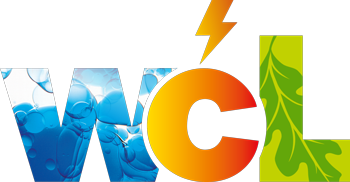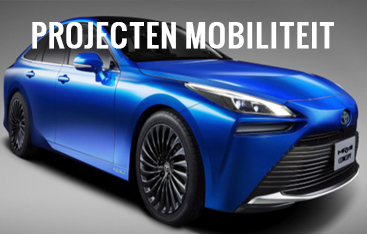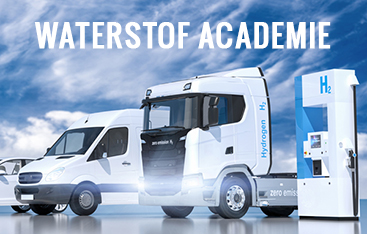Hydrogen-electric powered vehicles
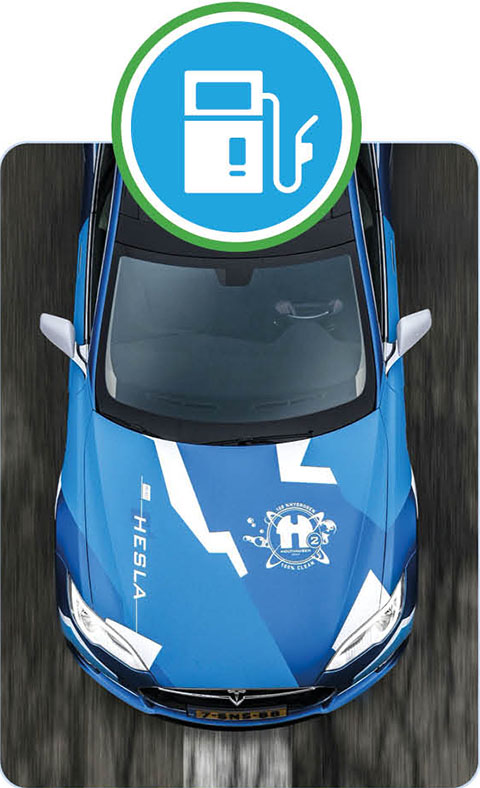
Hydrogen-electric powered vehicles are a promising development within mobility. In addition, there are developments in the field of battery-electric and fossil/hybrid vehicles and a mix of more sustainable fuels. Various forms will coexist.
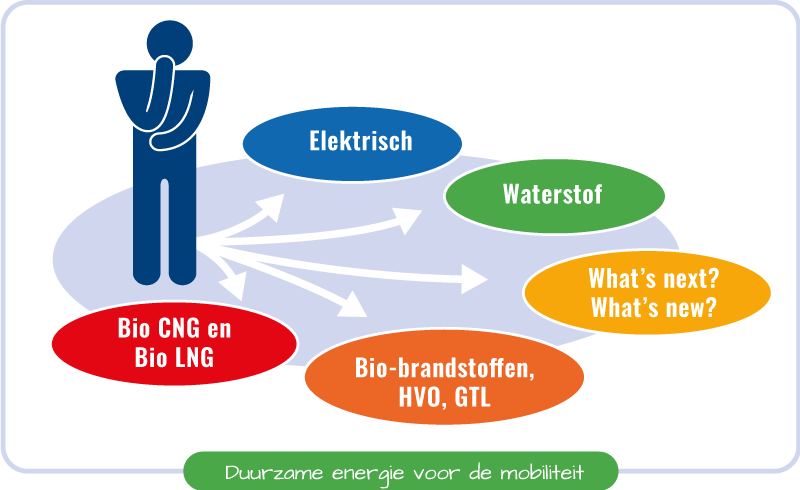
Hydrogen is currently still a relatively expensive opportunity. This is expected to change rapidly in the coming years. Developments in the field of hydrogen follow up at an incredible pace. Cooperation and coproduction in a structured and systematic way within the chain is of great importance. We prefer to invent the wheel only once. Project plans need to have a dot on the horizon, are made concrete (SMART), and are preferably implemented in phases.
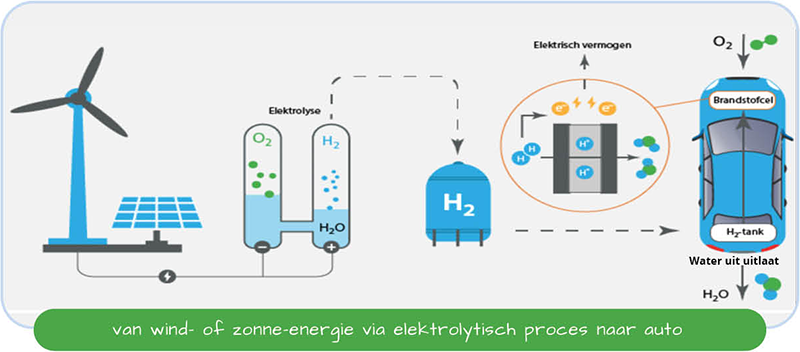
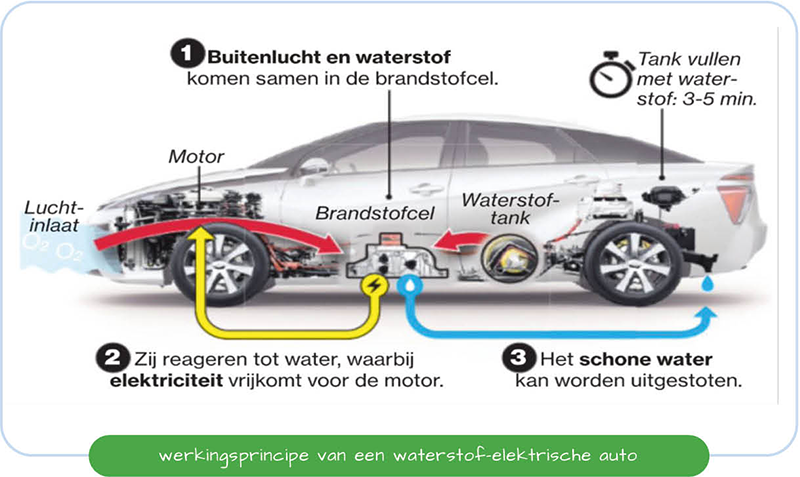
Perspectives for hydrogen within mobility

APPLICATIONS
Within the mobility sector, hydrogen technology is applied in three ways:
- as a fuel for a fuel cell in an electricity driven vehicle;
- as a fuel for a combustion engine;
- as a building block for synthetic fuel.
DRIVING ON HYDROGEN
Driving on hydrogen is one of the options for making the mobility sector more sustainable. Driving on hydrogen is realised by converting hydrogen into electricity and water on board of a vehicle. This method is particularly interesting for heavy vehicles that have to cover longer distances or where battery-electricity is not an alternative. The operating principle of this fuel cell is based on pure, green hydrogen.
Green hydrogen and battery-electric vehicles are currently the most realistic scenarios to meet the zero-emission targets. Hydrogen is a clean fuel and therefore complies with regulations for use within an urban environment, which makes rapid advance possible. A hydrogen car is also an electric car, with the main difference that a battery does not have to be charged beforehand, but that the car has to be filled up with hydrogen.
TRANSITION SOLUTIONS
Several alternative opportunities, interim solutions, and transition solutions are conceivable to contribute (in phases) to a more sustainable environment.
DUAL-FUEL
The hydrogen dual fuel solution is an example of a transition solution. Dual fuel engines can run on multiple types of fuel, such as hydrogen combined with diesel. These engines offer more flexibility than running on hydrogen alone: once the hydrogen has run out, the diesel engine can continue to operate.
The changes that need to be made to the current internal combustion engine are limited and in some cases can even be retrofitted to existing engines. As a result, the operation, repair and maintenance costs are almost comparable to current engine technology. That also means low operating costs.
Dual fuel technology is developing rapidly. Thanks to its flexible deployment, it can lead to an accelerated implementation of hydrogen within the mobility sector. Perhaps an interesting option for the agricultural industry and a number of transporters to get acquainted with hydrogen.
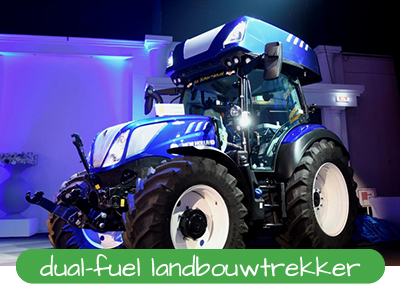
Dilemma’s
CHICKEN AND EGG
We need to break through the current chicken-and-egg-situation. There are no hydrogen filling stations, so no vehicles driving on hydrogen, and vice versa.
UNPROFITABLE TOP
It is expected that there will be a lack of sufficient critical mass in the coming years; insufficient scale can be achieved yet.
As a result, there is an unprofitable top in financing. Stimulating and promoting hydrogen initiatives is necessary to enable a small-scale start-up. WCL therefore supports project initiatives to realize hydrogen filling stations in Limburg.
Role of the Hydrogen Coalition
ENCOURAGING AND FACILITATING
WCL acts in the field of hydrogen and mobility as a driving and facilitating organisation. Thanks to its network, WCL is able to bring together and connect the necessary stakeholders to formulate joint advice for the future and to develop initiatives and projects.
COUNTER FUNCTION
By bundling expertise, WCL can properly address the various questions that all partners face. With its counter function, WCL can efficiently answer these questions and possibly suggest suitable partners for promising projects!
SME’s
WCL is also pre-eminently the place where SME entrepreneurs from Limburg can go with their questions about hydrogen and the wide range of deployment options.
SHARING KNOWLEDGE
WCL would like to share its acquired knowledge and insights, preferably in a structured setting such as the WCL Academy.
INTERPROVINCIAL COOPERATION
Thanks to its helicopter view in Limburg, WCL can cooperate well with other provinces (including North Brabant and Zeeland), creating a more complete picture of opportunities and possibilities for hydrogen implementation. This also facilitates joint lobbying, for example towards governments.
ContactPeter Ramaekersinfo@waterstofcoalitielimburg.nl +31 77 206 66 02 |
